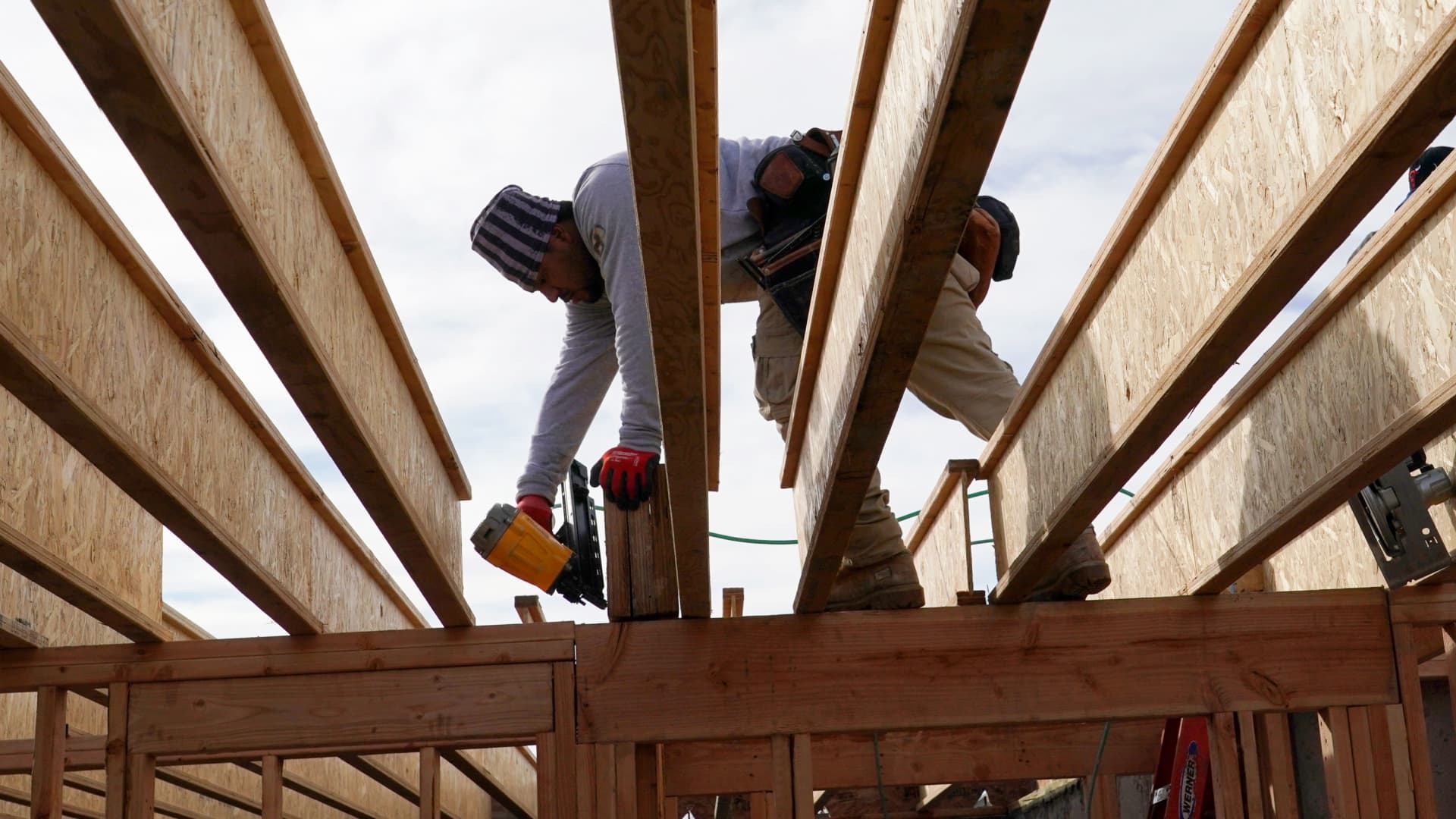Products You May Like
The once-hot housing market is cooling off at an alarming rate, and some homebuilders say it will only get worse come the new year as new orders dry up.
Fast-rising mortgage rates have caused once-frenzied homebuyers to turn on their heels and become worried about their potential investment and the health of the overall economy.
“There’s this cliff that’s happening in January,” said Gene Myers, CEO of Thrive Homebuilders in the Denver area, which was one of the hottest markets in the years leading up to and through the pandemic.
U.S. homebuilders were a major beneficiary of the Covid economy. Record low interest rates, combined with surging demand from consumers looking for more living space, caused a run on housing unlike most had ever seen before. Home prices surged over 40% in just two years, and homebuilders couldn’t meet the orders fast enough. They even slowed sales just to keep pace. All of that is over.
Housing starts for single-family homes dropped nearly 19% year over year in September, according to the U.S. Census. Building permits, which are an indicator of future construction, fell 17%. Pultegroup, one of the nation’s largest homebuilders, reported its cancelation rate jumped from 15% in the second quarter of this year to 24% in the third.
The public homebuilders that have reported earnings so far showed surprisingly strong results, but that is because much of it is based on a backlog of homes that went under contract last spring. That was before mortgage rates crossed 6% and then 7%.
Now builders are preparing for what’s coming next. Myers said his company’s balance sheet is incredibly strong right now, thanks to a backlog of homes sold at high prices, but he predicted that the market will be “ugly” by the start of next year.
“It is definitely a hard landing for housing,” he said. “Any hope of a soft landing really evaporated last spring, when it became so clear that our customers who are accustomed to such low mortgage rates just were going to go on strike.”
Myers was around during the last housing crash, which was brought on by a faulty mortgage market where just about anyone, qualified or not, could get a home loan. It caused a massive run on housing, based almost entirely on speculative buying and selling by investors. Single-family housing starts fell a stunning 80% from January 2006 to March 2009, but Myers notes that it was a slower turn compared with what is happening now.
“I think we’re seeing the most abrupt change in the market in my career, and I’ve been around a while,” he said. “I’ve never seen sales just turn off, which for us happened in May.”
Downward spiral
Barely six months ago, single-family housing starts were still up 10% year over year. That was just before mortgage rates really started to jump quickly. To go from a 10% annual gain in construction to a 19% drop in that time frame is an historically sharp turn.
While sales of newly built homes are falling, prices are still higher compared with a year ago. Much of that has to do with still-inflated prices for labor and materials. Part of the price strength may just be indicative of which homes are selling, namely the more expensive ones. But that may change soon, as well.
Sheryl Palmer, CEO of Arizona-based homebuilder Taylor Morrison, which just reported strong earnings for its third quarter, said entry-level buyers are clearly struggling. But she also admitted that higher end buyers are not flooding in the door either anymore.
“When we look at our move-up and our resort lifestyle buyers they absolutely can still afford to buy, but emotionally, you need to have the confidence,” Palmer said on CNBC’s “Mad Money” on Friday. “Even at today’s rates, both our FHA and conventional buyers have a great deal of room, but being able to afford it doesn’t mean they have the confidence, given everything that’s going on in the economy today.”
Palmer told analysts on the company’s earnings call that new orders were down “sharply” in September, and that the slowdown has been felt across a wide range of price points, geographies and consumer groups. As a result Taylor Morrison is pulling back on land investment, lowering its pace of new construction starts and offering buyers additional incentives.
Sales of newly built homes dropped below pre-pandemic levels in September, and cancelations are now double what they were a year ago, according to the National Association of Home Builders.
“This will be the first year since 2011 to see a decline for single-family starts,” NAHB Chief Economist Robert Dietz said in a release. “While some analysts have suggested that the housing market is now more ‘balanced,’ the truth is that the homeownership rate will decline in the quarters ahead as higher interest rates and ongoing elevated construction costs continue to price out a large number of prospective buyers.”
Supply of newly built homes remains elevated, unlike in the existing-home market, where listings are still scarce. NAHB reported that one quarter of builders are now slashing prices.
And that is the big unknown. Prices are cooling down for both new and existing homes, but analysts are divided as to if they will actually show year-to-year declines, and how wide those declines might be. Myers said he has heard talk of a 20% drop in prices for new construction.
“And it sounds really harsh, but when we were looking back, because our construction costs have gone up so rapidly, we only have to dial back a little over a year to be 20% less than we are now,” Myers said. “So to think about, well, we’re just gonna go back to 2020 doesn’t sound nearly as crazy as a 20% price correction. But I think it definitely has to happen if we’re going to get velocity back.”
